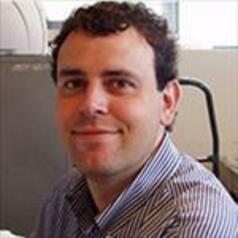First Gene Therapy for Tay-Sachs Disease Successfully Given to Two Children

Share
Two babies have received the first-ever gene therapy for Tay-Sachs disease after over 14 years of development.
Tay-Sachs is a severe neurological disease caused by a deficiency in an enzyme called HexA. This enzyme breaks down a fatlike substance that normally exists in very small, harmless amounts in the brain. Without HexA, however, this fatlike substance can accumulate to toxic levels that damage and kill neurons.
One of the symptoms of this disease was first described in 1883 by British ophthalmologist Warren Tay, who saw a cherry-red spot on the back of the eye of affected infants. In 1887, American neurologist Bernard Sachs described the profound neurological symptoms of Tay-Sachs in a seminal paper:
“… Nothing abnormal was noticed until the age of two to three months, when the parents observed that the child was much more listless than children of that age. … The child would ordinarily lay upon its back, and was never able to change its position … it never attempted any voluntary movement … the child grew steadily weaker, it ceased to take its food properly, its bronchial troubles increased, and finally, pneumonia set in, it died August, 1886.”
This dismal description of Tay-Sachs remains current, and those with the disease usually die by age five. Some people develop Tay-Sachs later in life, with symptoms starting in their teens that get progressively worse over many decades.
I am a member of a team of researchers from UMass Chan Medical School and Auburn University who developed a gene therapy that may help get around this barrier. Our treatment uses two harmless viral vectors to deliver DNA instructions to brain cells that teach them how to produce the missing enzyme. Similar techniques have been used to treat a number of related diseases and other conditions.
Unfortunately there is still no treatment for Tay-Sachs. Aggressive medical treatment can extend survival but doesn’t improve neurological function. The only effective way to treat Tay-Sachs is to restore the HexA enzyme in the brain. This is difficult, however, because the blood-brain barrier prevents most molecules from passing into the brain.
In the case of Tay-Sachs, these DNA instructions enter the nucleus of these cells and stay there, allowing for long-term production of HexA. Based on our previous studies successfully testing our gene therapy on different animal species, we believe that delivering the treatment to a central part of the brain allows the enzyme to travel along its connections to other regions and to be distributed throughout the entire brain.
The first child who received our gene therapy treatment was age two and a half, with late-stage disease symptoms. Three months after treatment, they had better muscle control and could focus their eyes. Now at age five, the child is in stable health and is seizure-free, which usually isn’t possible for patients at this age. A second child treated at age seven months had improved brain development by the three-month follow-up and remains seizure-free at a little over age two.
Be Part of the Future
Sign up to receive top stories about groundbreaking technologies and visionary thinkers from SingularityHub.


More testing is needed to confirm whether our treatment can fully stop disease progression. Given that this was the first time our treatment was given to humans, we used a conservative dose below the maximum therapeutic effects we saw in our animal studies. My colleagues and I are currently conducting a follow-up clinical trial to test the safety and efficacy of increasing doses in a larger number of patients.
The increasing cost of manufacturing these treatments makes it extremely difficult, if not impossible, to develop and test gene therapy for many ultrarare diseases where the number of patients worldwide is very small and profitability low.
We were able to deliver these treatments to the children in our ongoing clinical trials thanks only to funding from a generous family whose own child is a participant. This grassroots approach is a common theme in ultrarare disease research; development and testing are often supported by parents, foundations and federal grants.
Our Translational Institute for Molecular Therapeutics program at UMass Chan Medical School focuses on developing more viral vector gene therapies for an ever-expanding number of ultra-rare diseases in collaboration with families and foundations. We believe every patient afflicted with any of the approximately 7,000 rare diseases worldwide deserves a chance at a normal life.
This article is republished from The Conversation under a Creative Commons license. Read the original article.
Image Credit: esudroff / 95 images
Miguel Sena-Esteves, PhD, is an associate professor of neurology and a member of the Horae Gene Therapy Center. Miguel Sena-Esteves received his PhD in biomedical sciences from the University of Porto, Portugal, where he started his work in gene therapy. His laboratory at UMMS focuses on the development of adeno-associated virus (AAV) based gene therapies for lysosomal storage diseases, Huntington’s disease, ALS, FSHD and brain tumors. In addition, his laboratory develops novel AAV capsids to improve targeting, distribution and potent transduction of target tissues in these diseases, with a particular focus on the central nervous system. Dr. Sena-Esteves leads the Tay-Sachs Gene Therapy Consortium with the focus to develop an AAV gene therapy and conduct the first-in-human clinical trial. He is also leading the pre-clinical development efforts for a GM1-gangliosidosis AAV gene therapy in collaboration with Lysogene. In 2011 he received the Outstanding New Investigator Award from the American Society of Gene & Cell Therapy (ASGCT) for his many contributions to the field of gene and cell therapy. He has authored 88+ peer-reviewed publications and is inventor on several patent applications.
Related Articles

Single Injection Transforms the Immune System Into a Cancer-Killing Machine

New Gene Drive Stops the Spread of Malaria—Without Killing Any Mosquitoes

New Immune Treatment May Suppress HIV—No Daily Pills Required
What we’re reading
